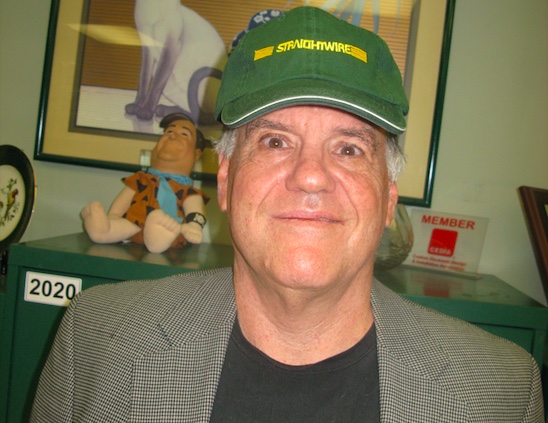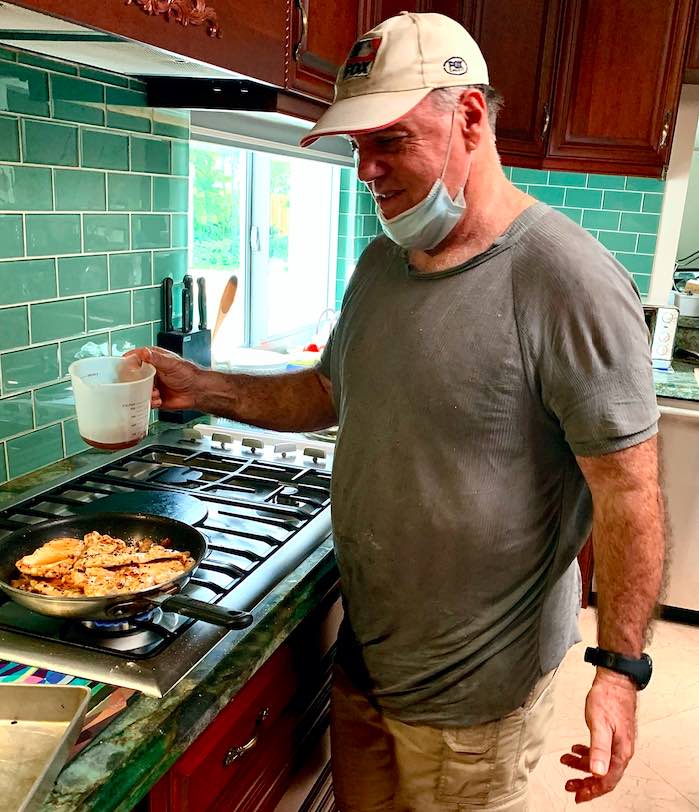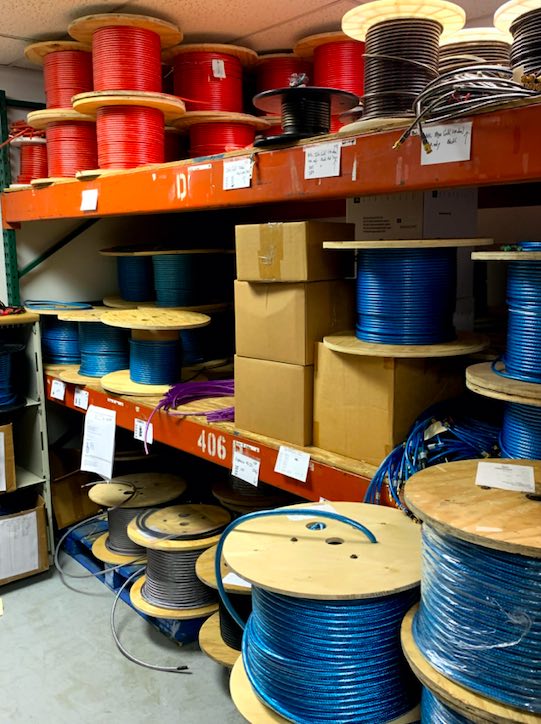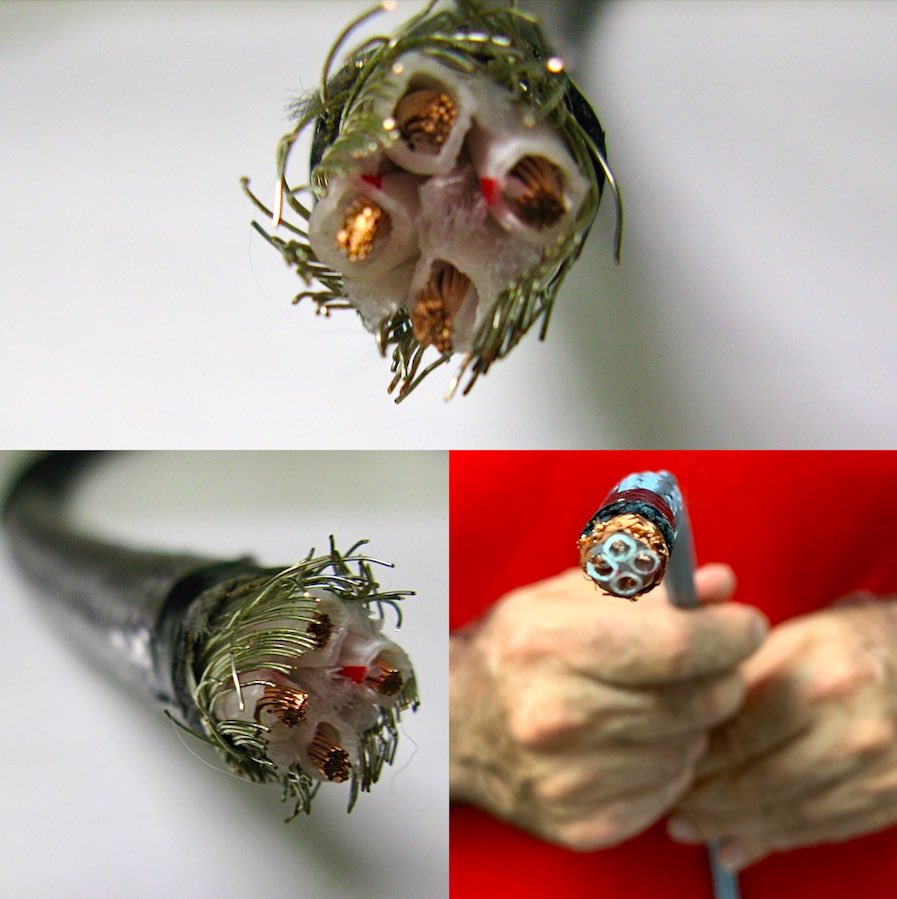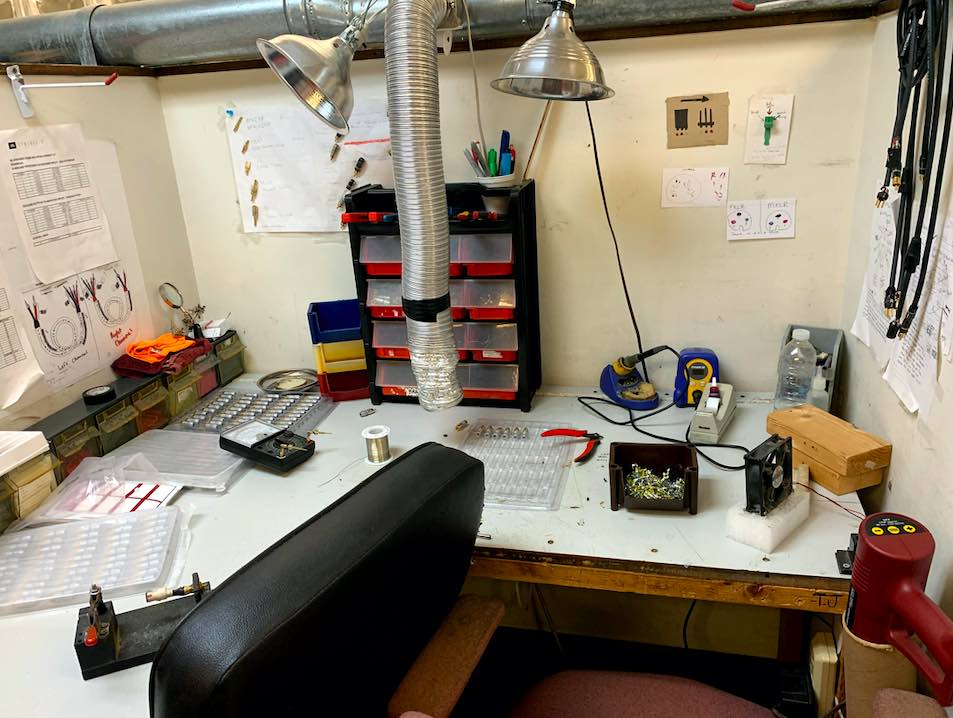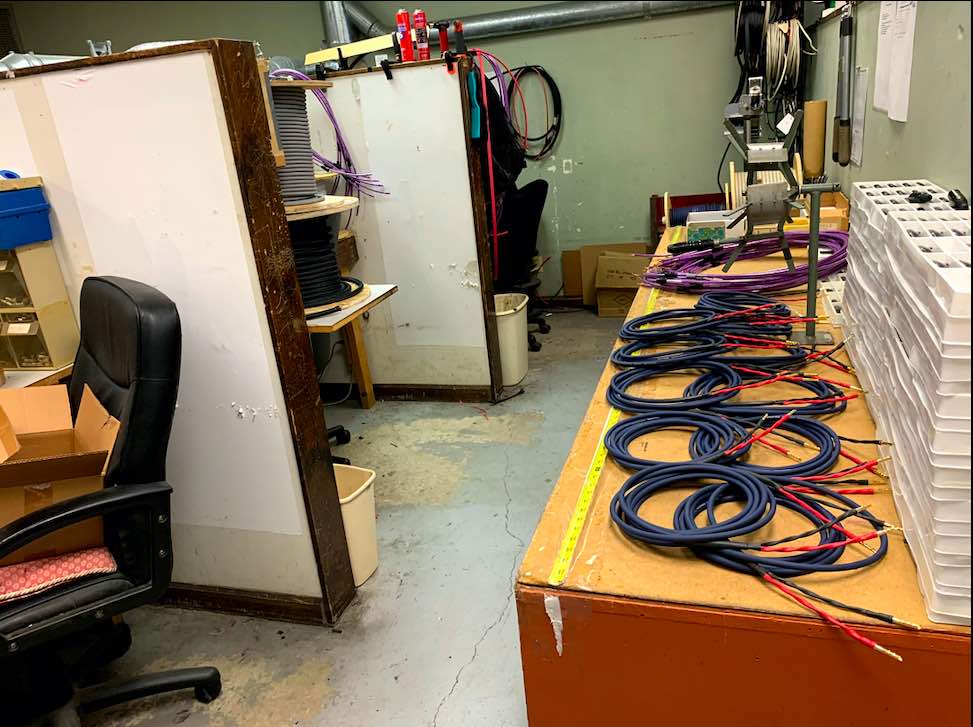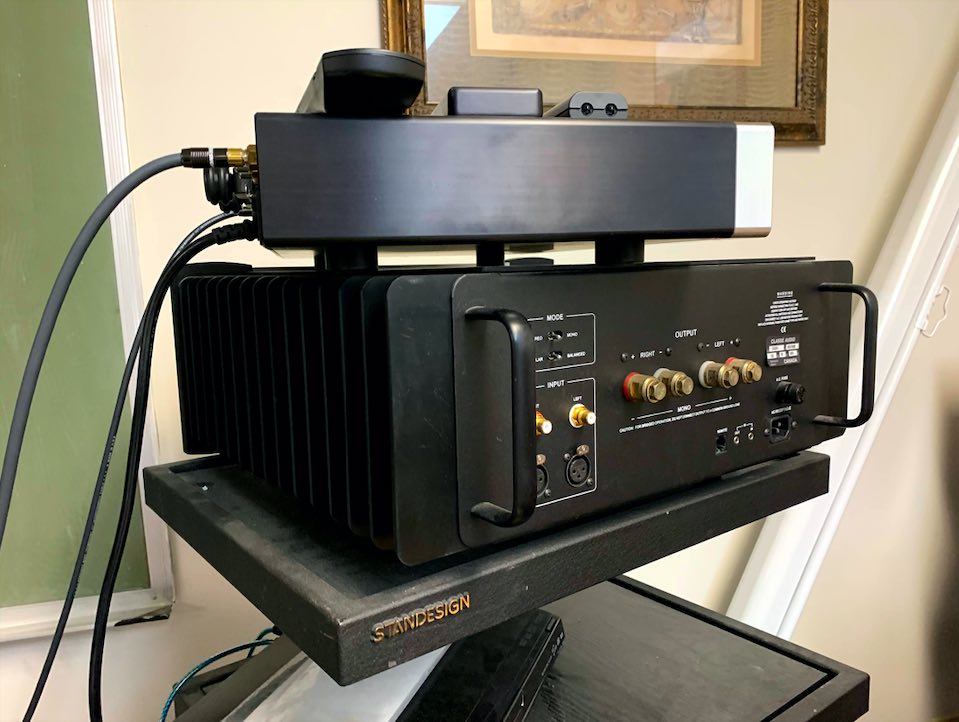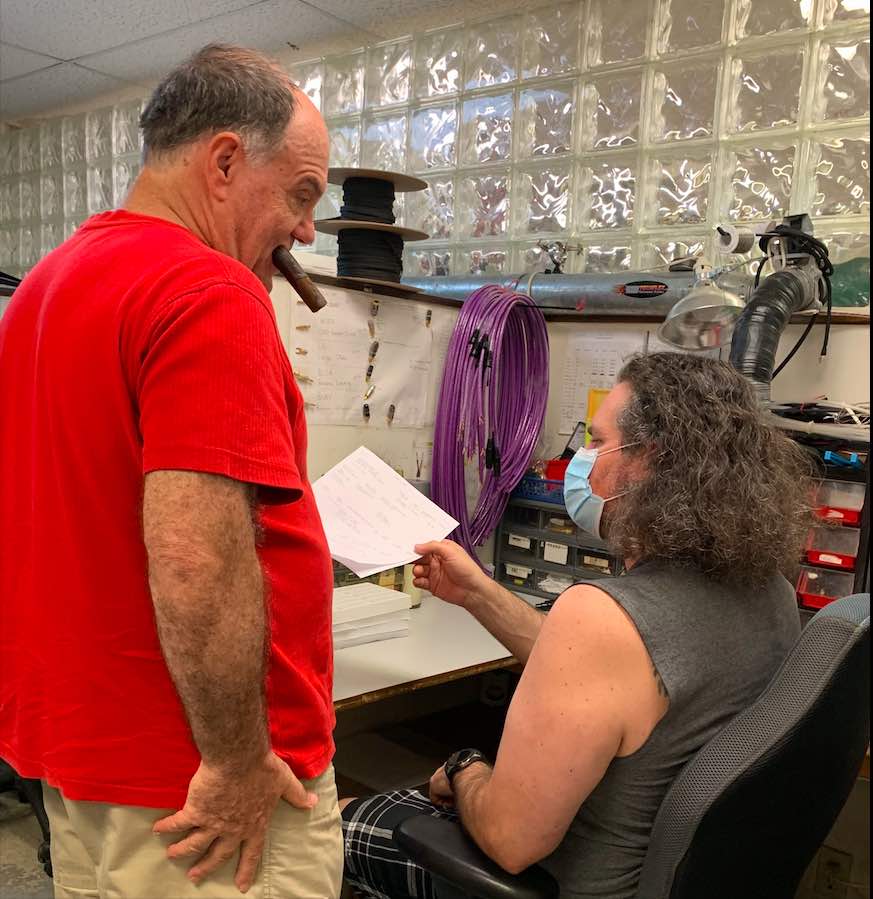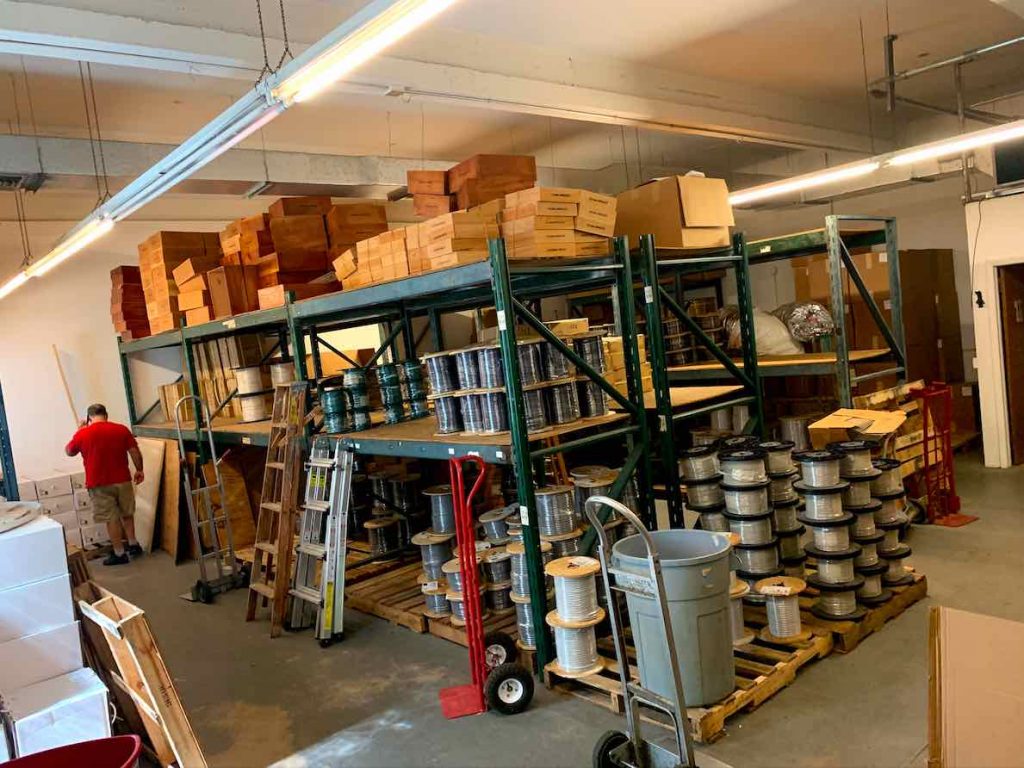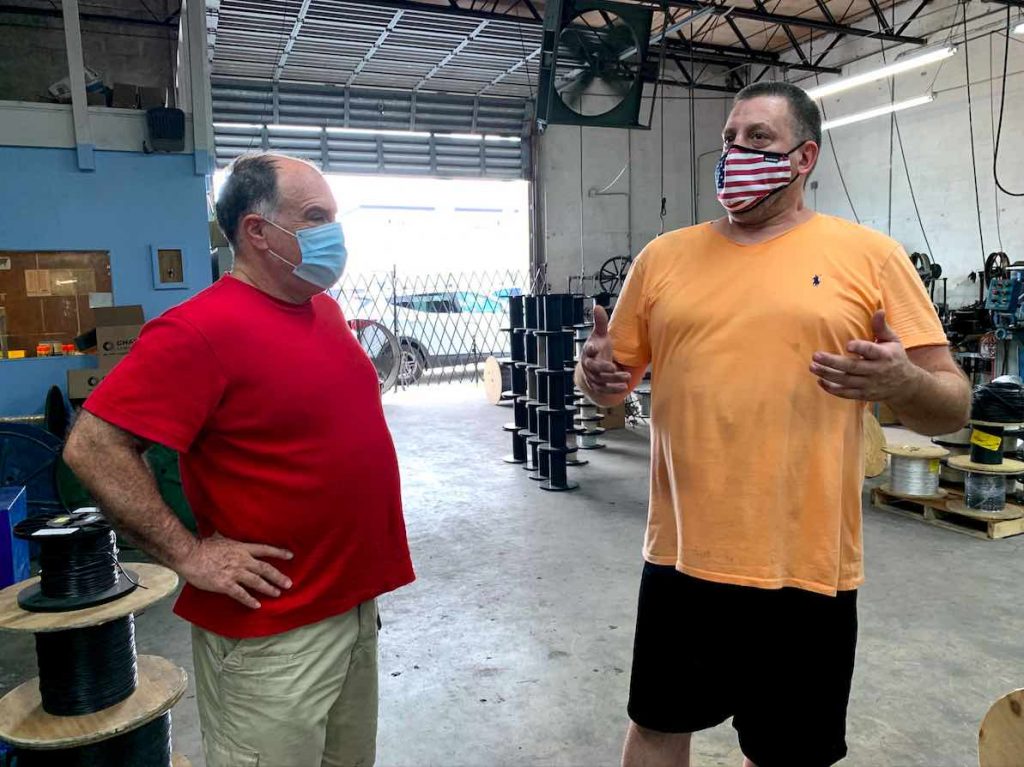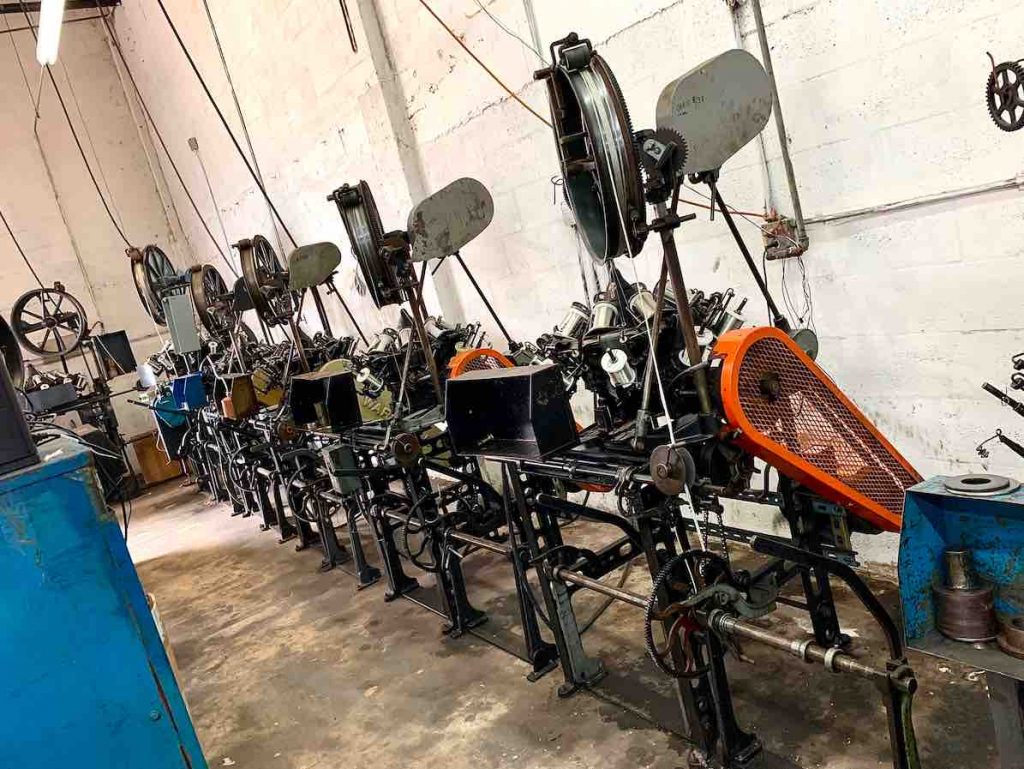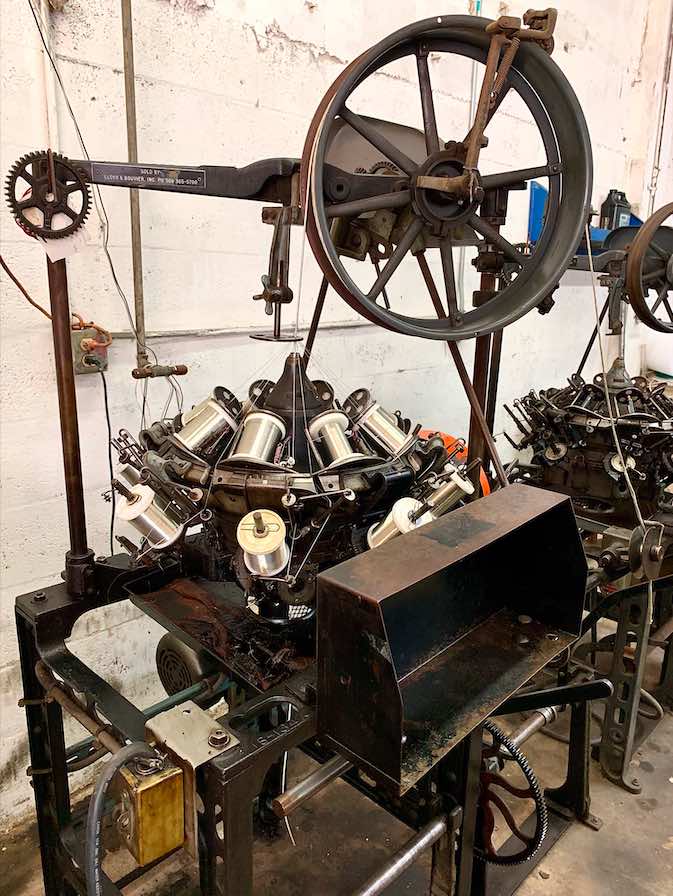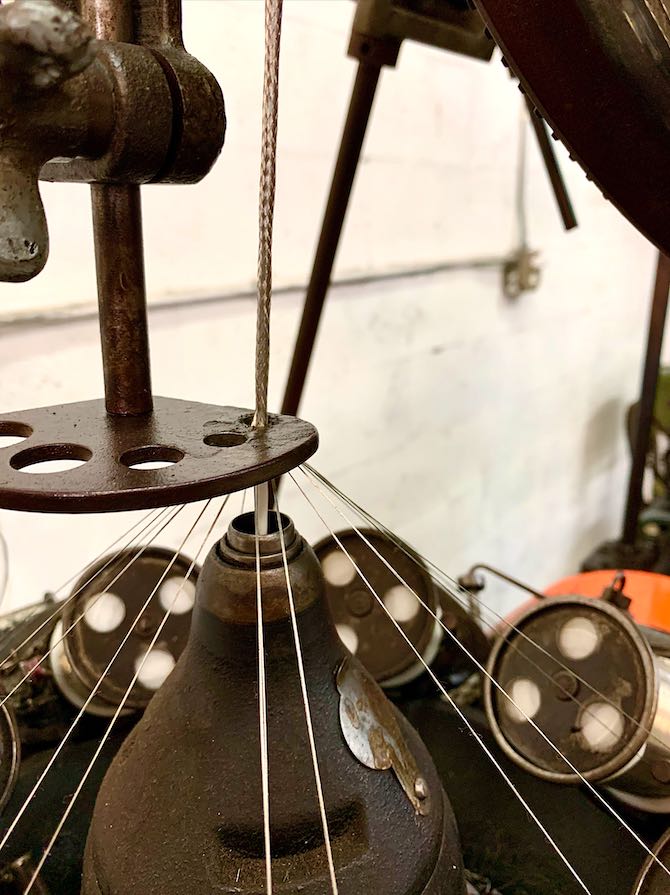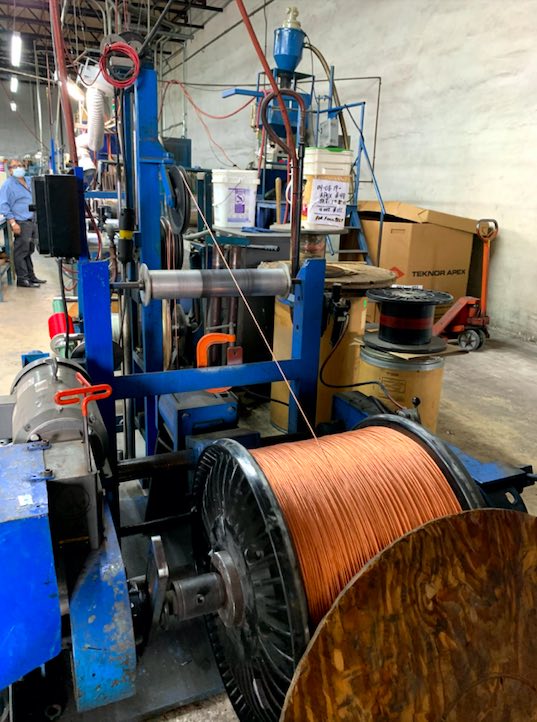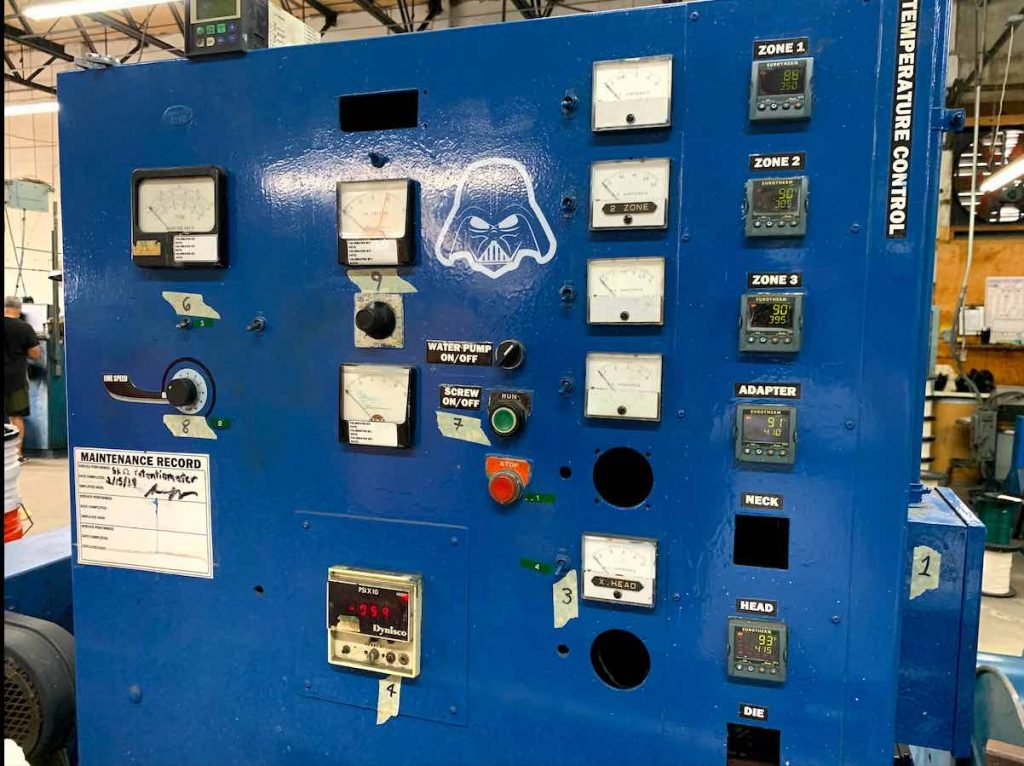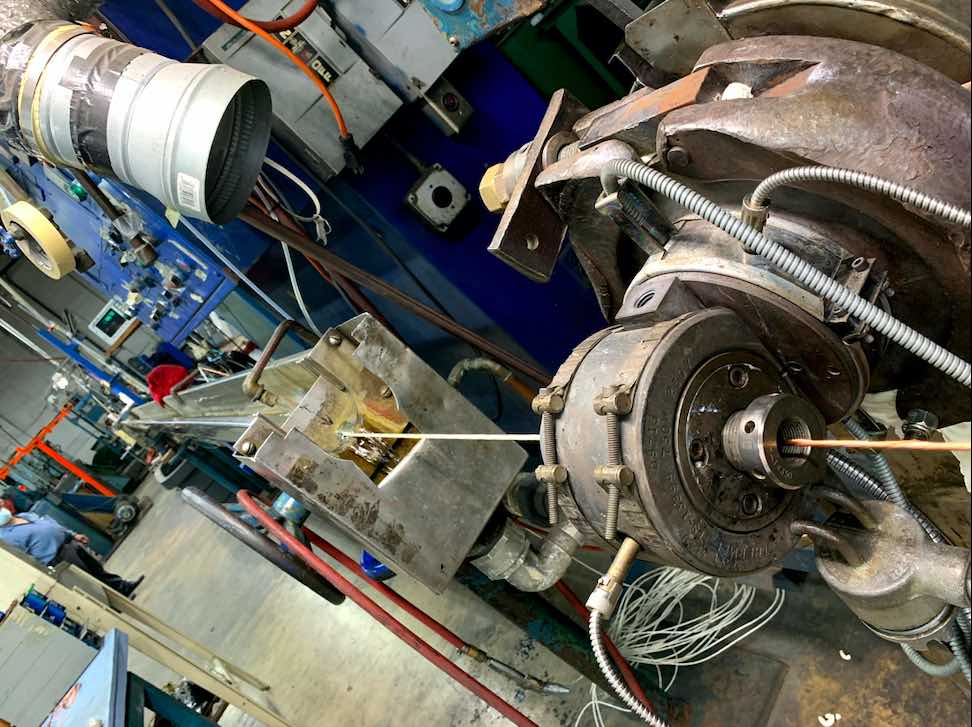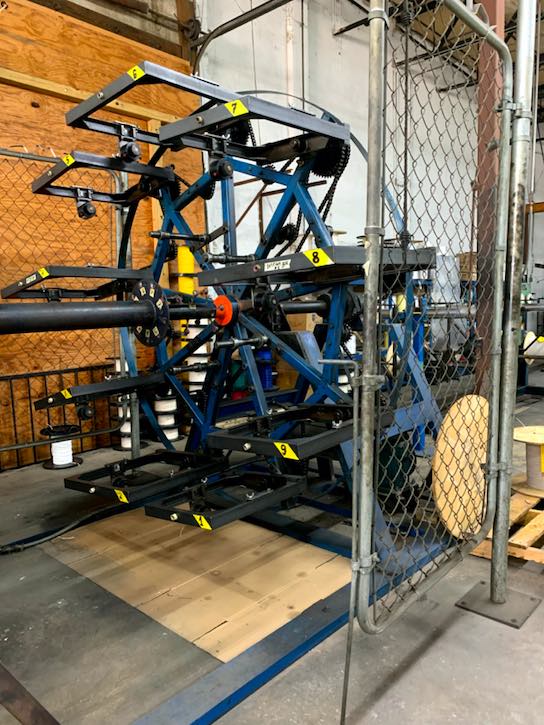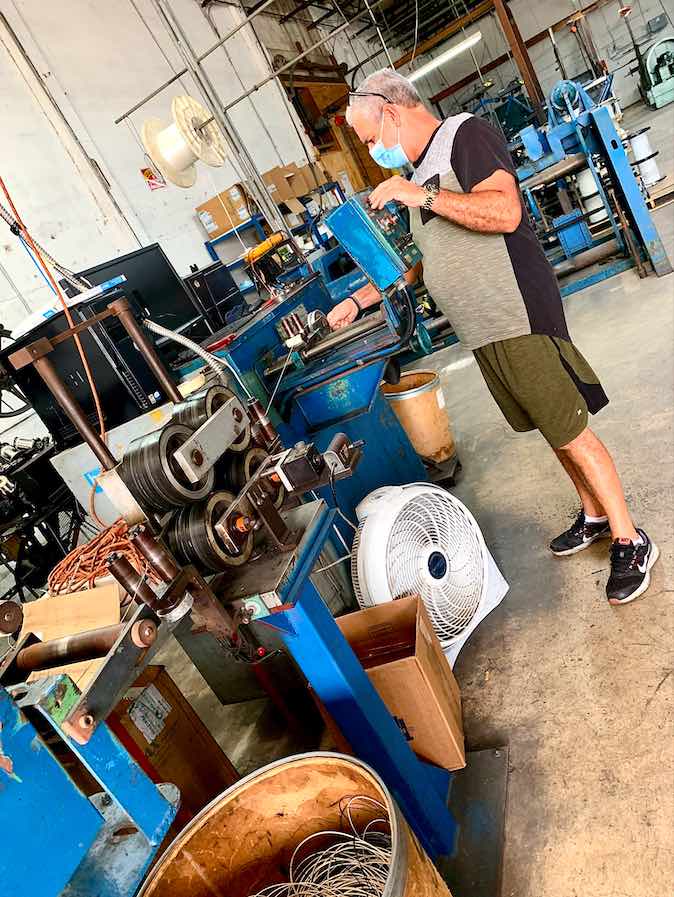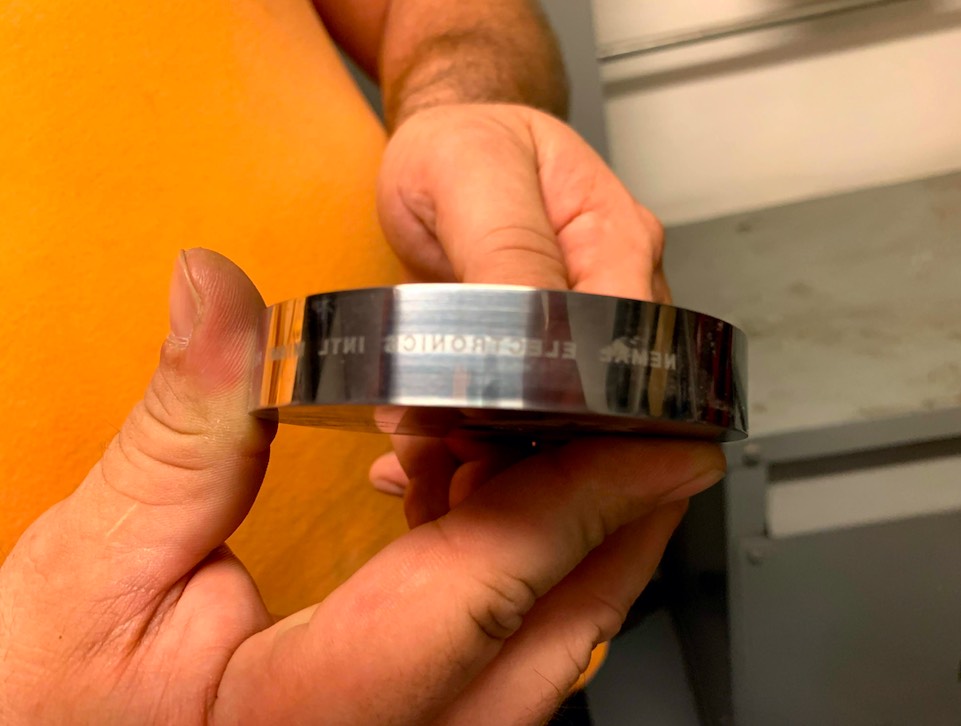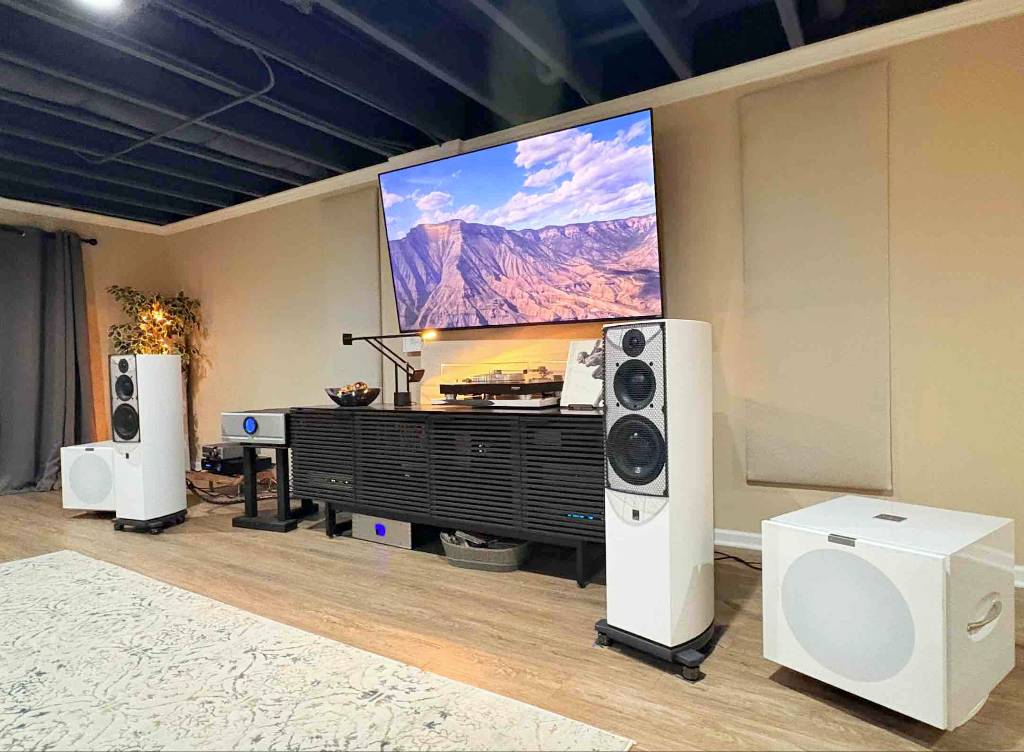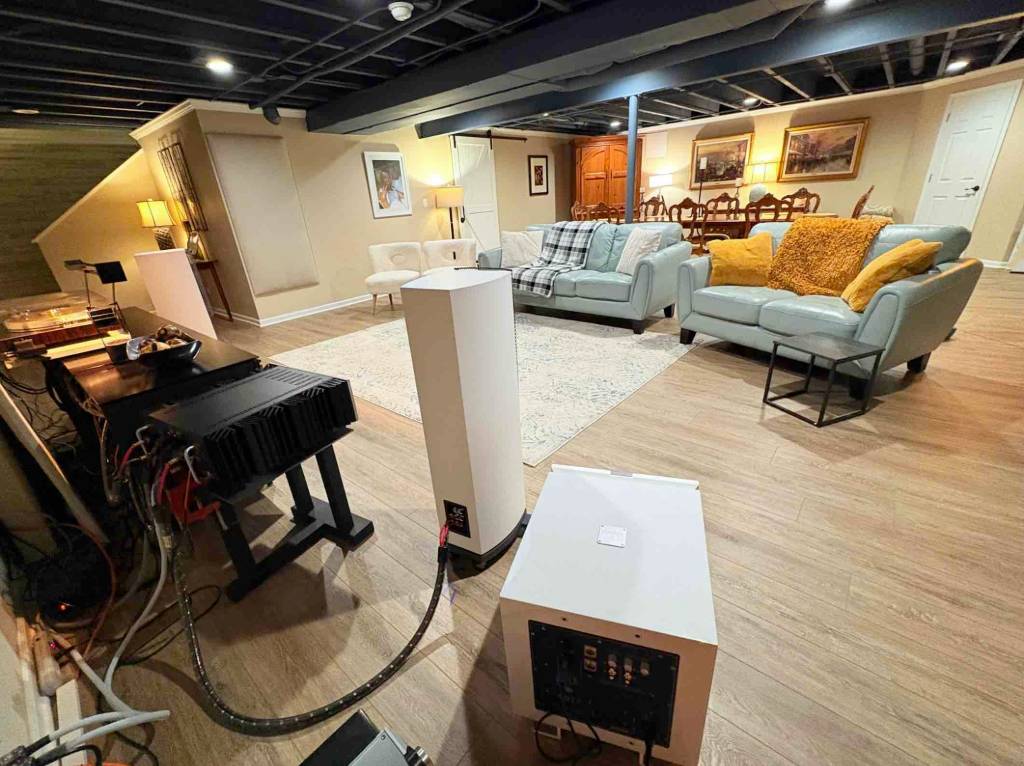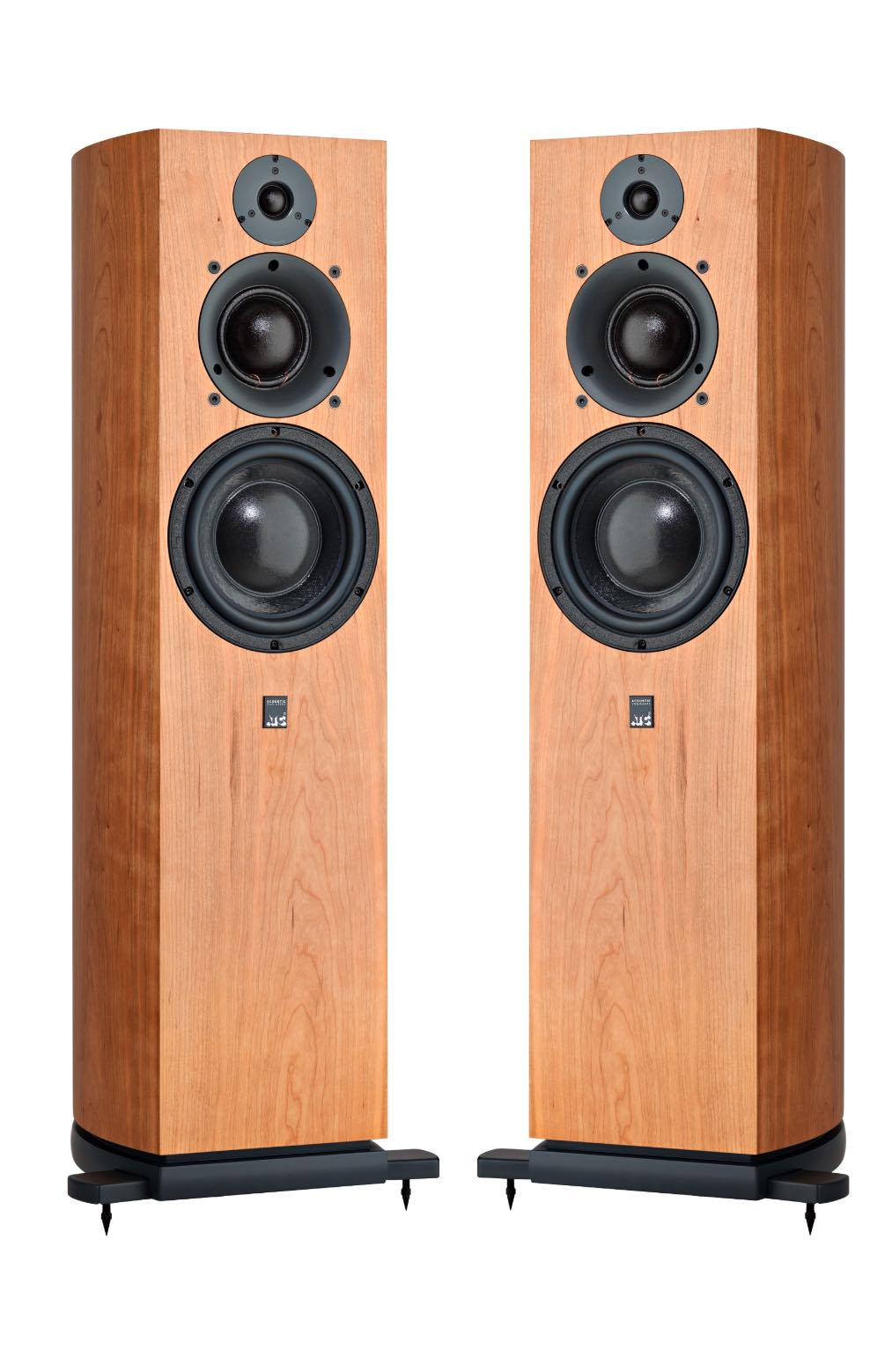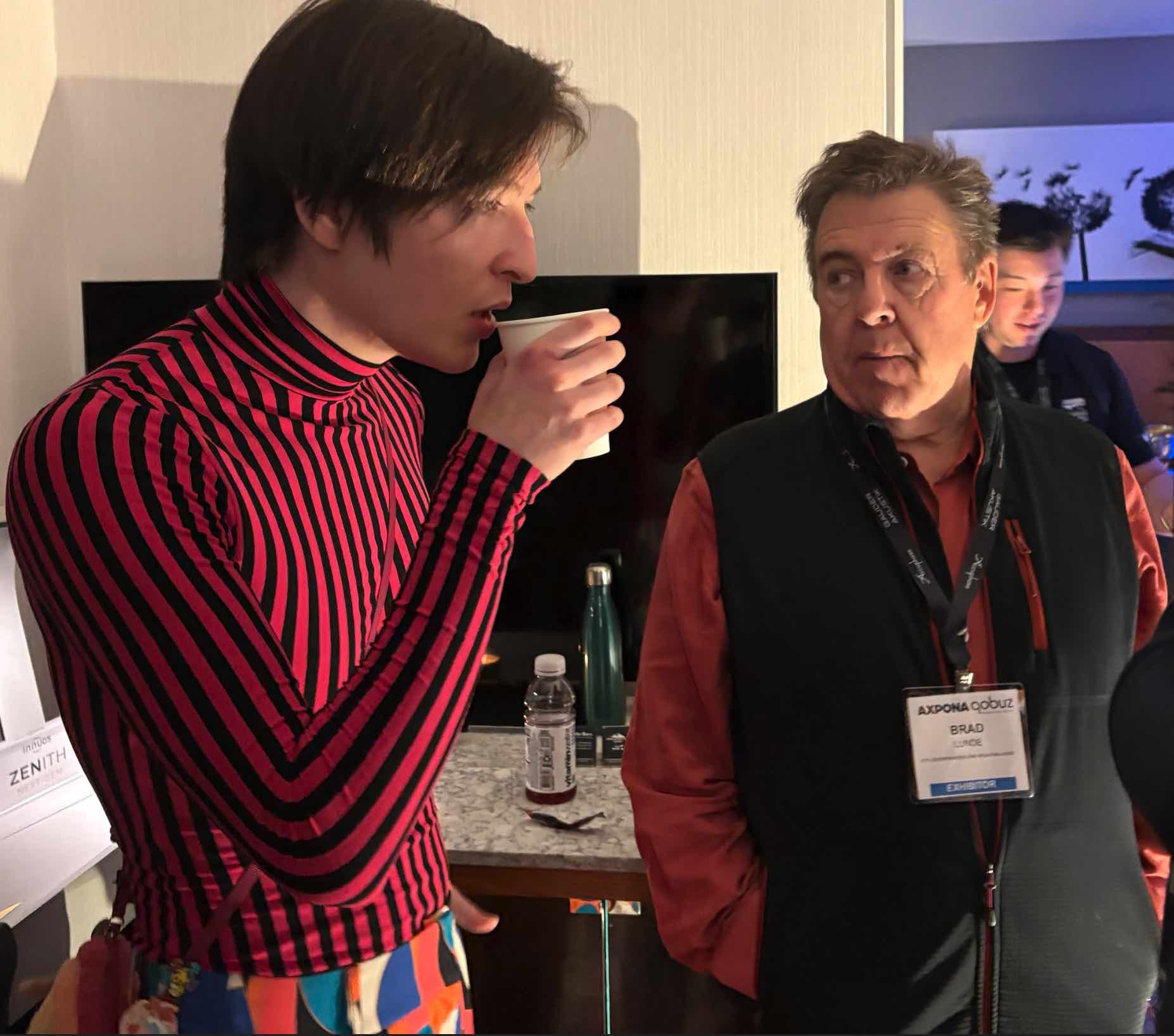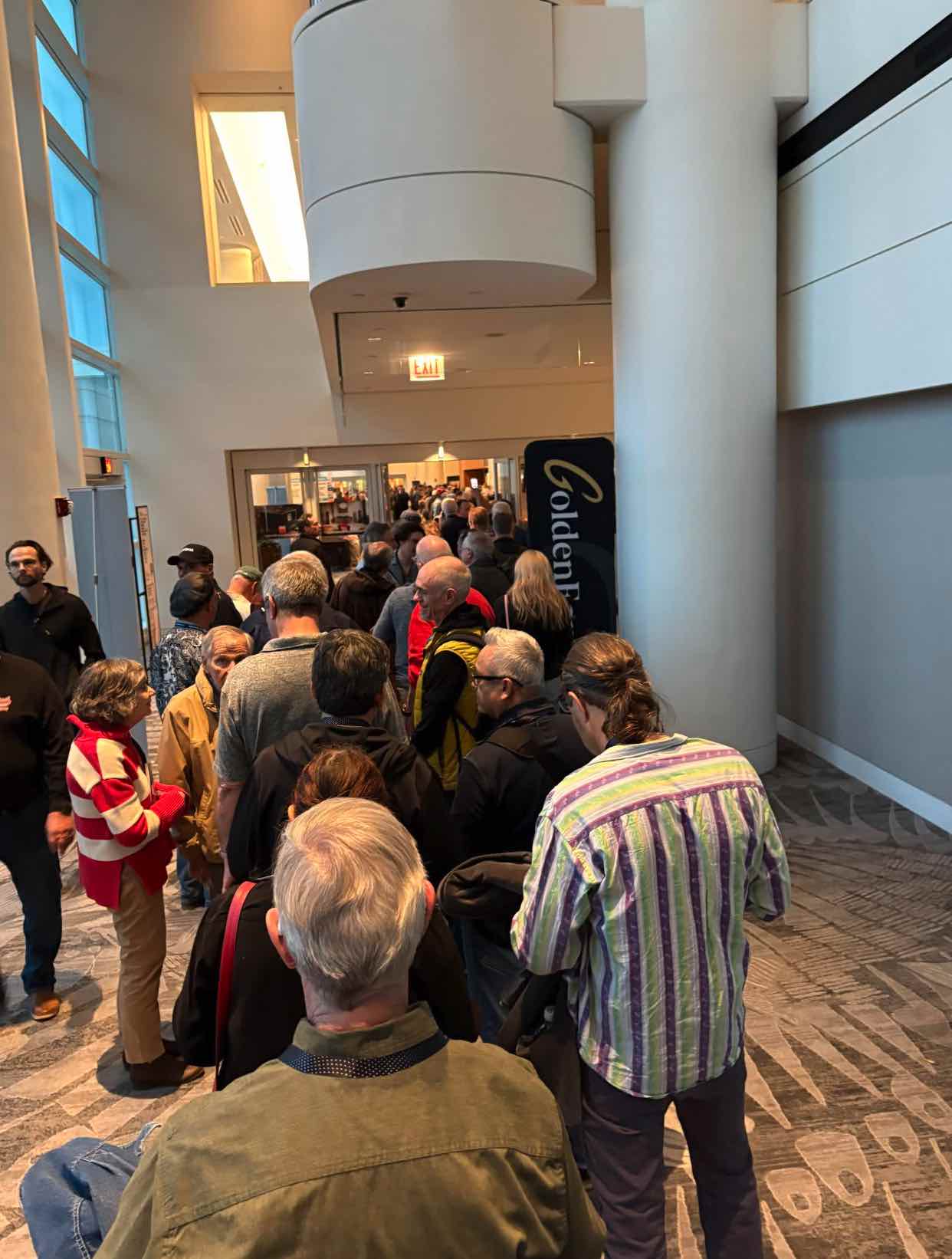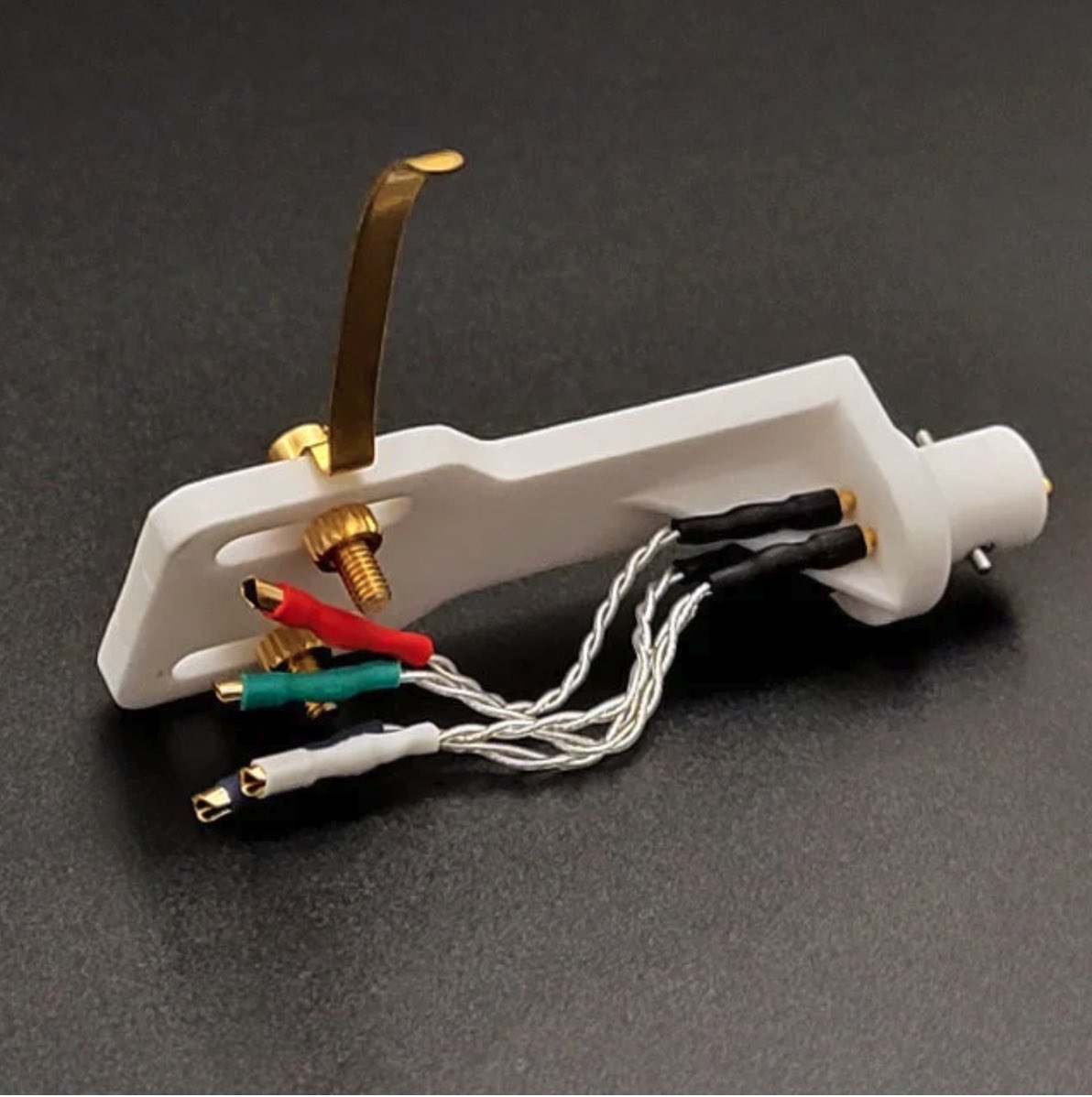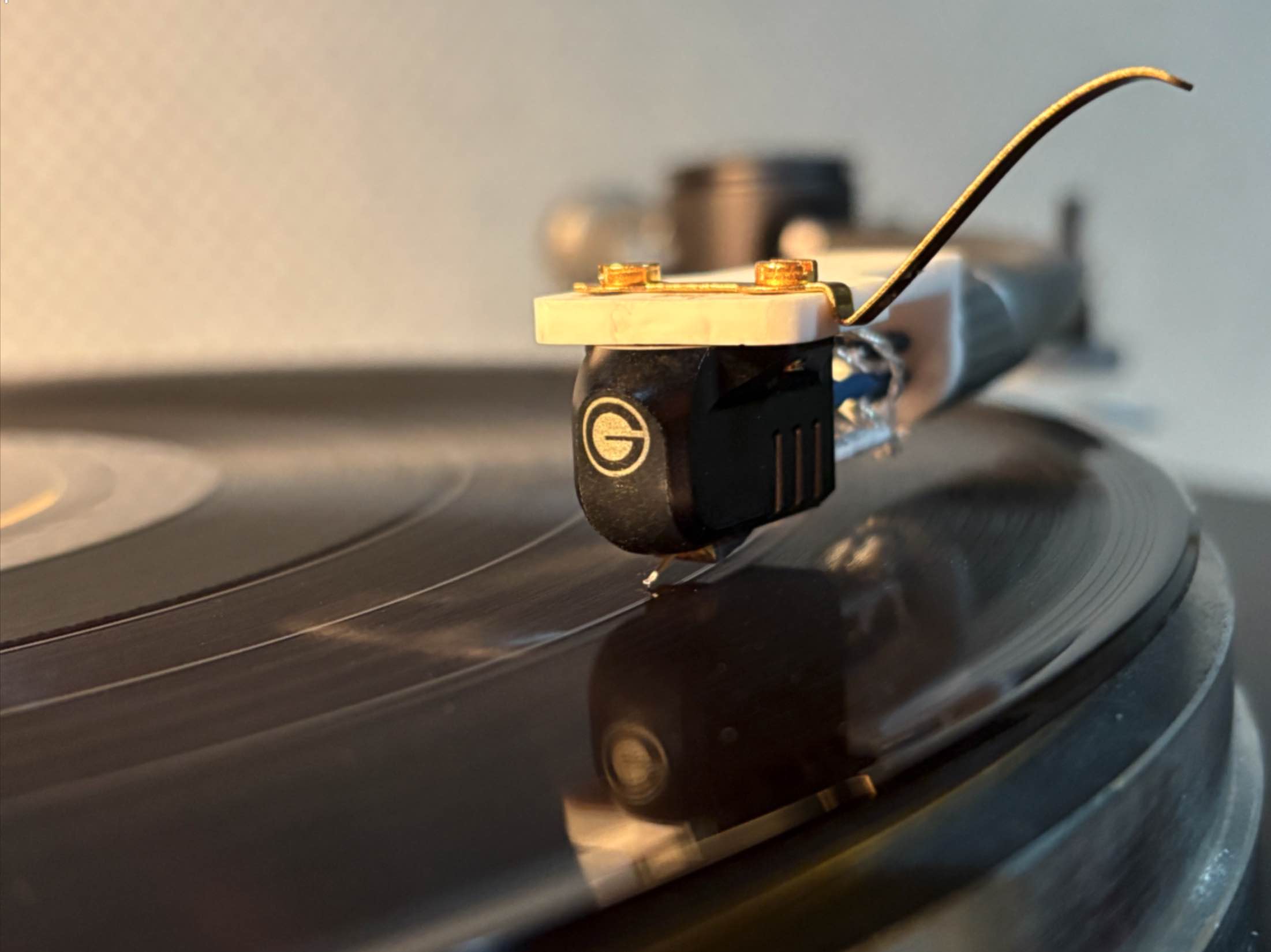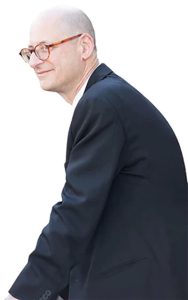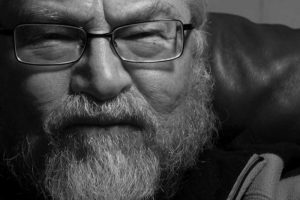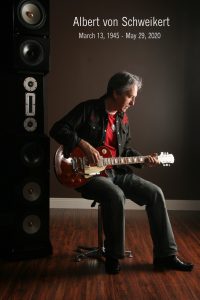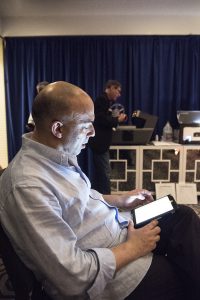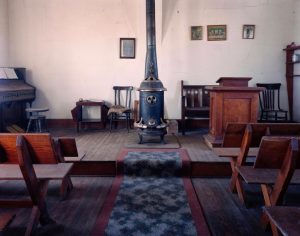Steven Hill, president of Straight Wire, Inc. (photo courtesy of Spencer Burke)
"Many of our customers are engineers," says Steven Hill, 63, owner of Straight Wire, Inc., a straight-shooting, cigar-chomping graduate of University of Pennsylvania's Wharton Business School, former CPA, and 37-year veteran in the audio industry.
Mr. Hill has no time for nonsense or marketing hyperbole, but believes in producing great cable products for fair prices. That contrasts with an experience that sums up a stigma associated with high end audio:
"Two decades ago, one of the few engineers writing for a leading audiophile magazine wrote a straightforward piece debunking some of the far-fetched marketing claims about high end audio cables," he shares, "But they never ran it. We need the 'voodoo' or magic to remain in cables, they told him."
A voracious reader and study in perpetual motion who's more than willing to help peers in the industry, he's well-liked for his friendly, honest, and upfront style.
PS Audio's CEO, Paul McGowan, says, "I think he's a great guy," and Ray Kimber, founder and president of Kimber Cable recently wrote on Facebook, "I adore Steven Hill, a class act!"
A Hot Wired Ride
Barreling down the boulevard in his older white minivan bearing the plates, "MR. HILL," we are headed for a tour of Straight Wire, Inc.'s headquarters, one of their warehouses, and a nearby cable manufacturer specializing in SMPTE fiber cables, broadcast assemblies and other high definition custom cables. Hill says it's the only specialty Audio Visual cable factory in South East Florida's Dade, Broward, and Palm Beach counties.
Straight Wire makes performance AV cables and equipment for over 50 international markets. It has developed and supplied internal wiring and audio interconnects for Premium AV manufacturers such as JBL Synthesis, Sony, Thiel, Triad, and many more who prefer non-disclosure. The specialty AV cable factory we're visiting afterwards (name withheld at their request) is one of the first two manufacturers of Society of Motion Picture and Television Engineers (SMPTE) standard digital cables (now mainly fiber optic) in the United States.
Continuing on the marketing excesses surrounding audio cables, Hill says, "The Copper Development Association (CDA) doesn't even recognize anything more than four 'nines' in copper purity—that's 99.996 percent purity." (For more details, see www.copper.org)
The big issue with high purity copper claims is that even in a clean manufacturing environment, keeping it free of surface contaminants is problematic; the myth breaks down in the handling and processing of all materials—copper, silver and applications of inner insulations touching the conductors.
Straight Wire was the first high end AV cable company to use compressed conductors for AV cable applications over 20 years ago, Hill asserts. Utilized in the automotive and other industries for strengthening properties, few explored the electrical and mechanical benefits for audio signals.
"A perfect lay of seven, 19, or 41 strands running thru consecutive dies results in minimized air spaces and electrons strand to strand jumping," he explains, adding that the resulting "compressed conductor technology (CCT) delivers the best attributes of solid versus stranded conductor configurations."
Cooking Cables with PTFE (Polytetrafluoroethylene)
"Making wire is like cooking or baking," he says. "You can have good ingredients, or materials, but if you don't cook them right—the process—they are not optimized."
Steven Hill seen here cooking Chicken Marsala at home
He continues: "Overcooking a USDA choice or prime piece of steak can make it like shoe leather! A collapsed soufflé will have bad texture compared to a basic omelet. Care must be taken in the handling for most processes to achieve accurate and consistent production."
Take, for example, the handling of internal wires during cable construction. "As copper is heated from room temperature, it releases heat and moisture," he says. "One solution is preheating the room temp wire to 150 plus degrees F and add a skim coating of insulation before the final, thicker insulation."
In addition, Straight Wire cold wraps the bare wire of some of their premium cables with PTFE tapes. Many of these tapes are soft and can deform when rolled in the manufacturing process, as well as bent in real life usage. By adding a thin layer foam polypropylene / polyethylene, it gives structural stability to minimize mechanical and electrical variations.
Many inner cable insulations are chemical foamed, with some using nitrogen gas injection for greater expansion. DuPont, which owns the rights to Teflon (trade name), does not allow that name to be included in cable manufacturers' descriptions, even if they are buying the material from DuPont, I am told. In fact in the late 80s, DuPont ran ads featuring Straight Wire for innovative use of their products.
"PTFE (Polytetrafluoroethylene) was invented accidentally by Roy Plunkett of DuPont back in 1938!" he exclaims.
Early use of FEP (Fluorinated ethylene propylene)—or hard Teflon—have been superseded by new compounds such as PFA (Perfluoroalkoxy Alkane) and gas microporous foamed PTFE tapes pioneered by W.L. Gore who also started at DuPont.
Other common inner insulations include:
- PVC (Polyvinyl Chloride) – very common low cost, low performance insulation.
- PE (Polyethylene, low density, high density, foamed, cross linked yielding good internal specs for low temp insulation.
- PP (Polypropylene, similar to Polyethylene but boasting a wider temperature tolerance and high strength with low dielectric and dissipation factors.
- PUR (Polyurethane, tolerant of extreme temperatures, it is noted for its ruggedness, flexibility and durability over time.
- TPE (Thermoplastic Elastomers, a mixture of polymers that can be extruded and foamed with flexible characteristics of rubber.
We reach our destination—an 8000 square foot, one story structure with no windows. Built to withstand any hurricane with a concrete roof over 10" thick, the former Honeywell security headquarters was purchased in 2000 as Straight Wire outgrew its prior facilities. They also have an additional 2000 square foot warehouse for bulk wire, packaging and other storage needs.
"I don't know why more people in the business don't buy their own buildings," he says, insisting that it's a great investment.
A Peak Behind the Curtain
The Straight Wire building is neat, organized and like Steven, utilitarian; built for efficiency, it's more Home Depot than Crate and Barrel. Along the corridors, various bundles of bright colored cables hang from display stands; many of their small rooms are designated for Levels 1-4 cables; there's also a custom connector room, B stock room, and tool and supply rooms, as well. All told, they carry large inventories of 80 different cables in bulk plus hundreds of connectors.
"Over 75% of materials are made in the U.S.A.," Hill says. "We keep large inventory for OEM (original equipment manufacturer) for Harman, Triad, Wisdom, and many more." They also stock offshore made HDMI, TOSLINK (optical cables), USB cables and connectors.
These are several cross sectional glimpses of some of Straight Wire's speaker cables
Their main products are:
- Interconnects: MusiCable, Symphony, Chorus AG, Synthesis, Pro Quad, Encore, Rhapsody, Expressivo, Serenade, Virtuoso, and Crescendo.
- Speaker cables: Waveguide, B-Flat, Rhythm MusiCable, Super Quad, Chorus, Soundstage Symphony, Octave, Rhapsody, Expressivo, Serenade, Virtuoso, and Crescendo.
Several rows of workstations are specially constructed workspaces employing exhaust suction (not required by OSHA, Hill points out) to suck up solder fumes and featuring magnifying lights, in house made custom Delrin solder stations, various tools and materials, Herman Miller and other high quality adjustable chairs. There's also a drill press, bandsaw, grinders, Dremel tools, and various hand tools for custom fabrications.
Step into Hill's large office and you'll find his email open on his computer that he addresses throughout the day, and his desk is covered with shifting piles of invoices and paperwork. There are several small tables with high chairs around them, a chalkboard and several components, including an old Classe amp and a Jeff Rowland Integrated amplifier linked up to a pair of futuristic stand mounted monitors used for testing cables.
He introduces me to Jerry Willsie, Sales Director, and Spencer Burke, Operations Director, both have been with Straight Wire for over 22 years. There's also a production worker named "Tex," one of several highly skilled production staff with an average tenure of over eight years. Tex is laboring at his workstation on a custom interconnect order for a longtime customer and gets an update on some specs from Steven.
"Do you need anything from the warehouse?" Hill asks Spence as we head out to visit a 2000 square foot Straight Wire warehouse lined with several tall rows of shelves and pallets stocked with large spools, boxes, and bundles of cables and other supplies in the main room. Once there, Hill walks me through, pointing out some highlights, then takes a break to field several business calls. Despite having several staff out due to COVID-19, they remain busy and are well stocked.
Next up is our tour of the cavernous specialty AV cable factory, where I'm introduced to the manager, Will, and the semi-retired operations guru, Raul.
Factory Tour
A large, industrial fan in front of a large, open steel garage door and another one overhead cool the workspace from the sweltering Florida heat. Inside, four extrusion lines, full CNC machines for custom connector manufacturing, a fully UL certified testing lab, Wardwell braiders, custom large planetary and taping machines share space (the facilities, a computer engineer says, remind him of a consulting job with Texas Instruments some years ago). The company was developed over 30 years ago by a large distributor for custom low temperature complex cables for precision, broadcast and commercial high quality cables, Hill says.
Standing roughly 6' 3" in his COVID-19 mask, an orange tee, black athletic shorts and shoes, Will is friendly and talkative as he conducts our walk and talk, catching up with Hill, who's utilized their services in constructing some Straight Wire power cables in the past, while Raul mans a cable insulating machine nearby.
Will and Raul have over 70 years combined expertise, Hill tells me, and they're both from the Worcester, MA region—"the cable capital of USA for over 75 years!"
Raul monitors a cable insulating machine
The extrusion lines have multiple computer controlled sensors for temperature (4), capacitance, and physical dimensions to make precision high level cables. Constant monitoring by high level technicians ensure that all relevant parameters are maintained, Ambient temperatures, moisture and physical characteristics are considerations in all phases of production.
The AV factory produces mainly for select direct end users, including TV networks, medical apparatus clients, and specialty classified projects. They also have a large, offsite facility for advanced fiber optic assemblies and other digital / analog terminations.
During our visit, a raw wire gets stuck in a machine that coats it with insulation and cools it with water from a spigot. Raul, who turns it off, points out the culprit—burrs in the subpar, jagged wire that an AV company had sent for processing; it snagged in a narrow aperture, causing molten insulating material to drip and pool on the concrete below.
A proprietary specialty planetary machine
Will shows a print wheel for printing directly onto insulated cables
The tour has been an eye opener with its custom machines, processes, and applied technologies.
However, there's work to do and business calls to return, so Will says goodbye, heads off for lunch and more office time.
A Few Words on Burn-In and Cable Selection
On our drive back through commercial districts, bayside and housing developments (where we view Biscayne Bay and old neighborhoods that have been flooded with water view high rises by developers), several audio topics come up. One is the controversial "burn-in"—the idea that new audio cables and equipment take hours of playback time to settle-in and sound their best.
"Just like for a speaker or preamp, the first time signal is running through, the inner insulation—or dielectric material on the conductors—stores and releases energy," he explains,"it becomes stable anywhere from 20 to 50 hours based on materials and signal size and, as such, it is a one time process."
"In speakers and preamps—the capacitors have to store and release energy—they can take from 20 to 100 hours. Some companies use burn in devices on cables, but we let the customers do it to hear the progression."
And what are the benefits of burn-in? "Sharper, more pristine high frequencies, more coherent lower midrange (sibilance on vocals and horns), and tighter, faster bass."
"The analogy that's easy to visualize is taking a heat gun or hair dryer to Saran or clear wrap," Hill offers. "It will shrink to a certain point and stabilize—then it wont shrink any more."
Bottom line, he says, all insulations—but not their outer jackets—will store and release energy in small amounts, emphasizing, "this is a one-time process when new."
Then there's the issue of properly matching audio cables with one's system. Of course, equipment impedance and tuning, as well as their interactions with speakers and the room, are all considerations. He laughs at the thought of dynamic, soundstage-forward speakers ensconced in modern concrete mansions with vast walls of glass and bare marble floors featured in the Netflix show, The World's Most Extraordinary Homes.
"You just know how reflective and irritating that sounds!" he exclaims.
"Unfortunately, many people don't consider that the room can be the most important component," he grouses. "However, we look at size, ceiling height, flooring materials, seating, exposed large windows, open walls, and intended speaker placement."
Towards that end, Straight Wire's free Audio and Home Theater Analysis has been a staple of their websites for over 16 years as a starting point; knowledge of system components and their sonic tendencies, coupled with room environment, gives them good insight to suggest cables, speaker / amp placement, and cost effective tweaks to improve performance. Additionally, client preferences such as types of music, volume, and listening position preferences help inform their recommendations.
Biscayne Bay
Summing Things Up
Our visit now over, Hill offers some final thoughts on the audio cable industry.
"It has been my pleasure for nearly 40 years to see the growth of the high end and audio video cable industry as an outgrowth of advances made in aerospace, medical, and technological industries," he confides.
"With advancements in materials, processes and applications, which we have applied to our high performance AV cable developments, the standards and performance bars have been raised dramatically for video displays, speakers, amplifiers, digital content and related components, headphones and mobile audio devices."
To achieve optimal enjoyment, he concludes, cables have to deliver commensurate performance qualities. "With the huge growth of high def streaming and 5G mobile devices over the next five years, we anticipate new challenges and opportunities in the specialty high end audio industry worldwide."
Straight Wire, Inc.
2032 Scott St, Hollywood, FL 33020
800.683.4434




